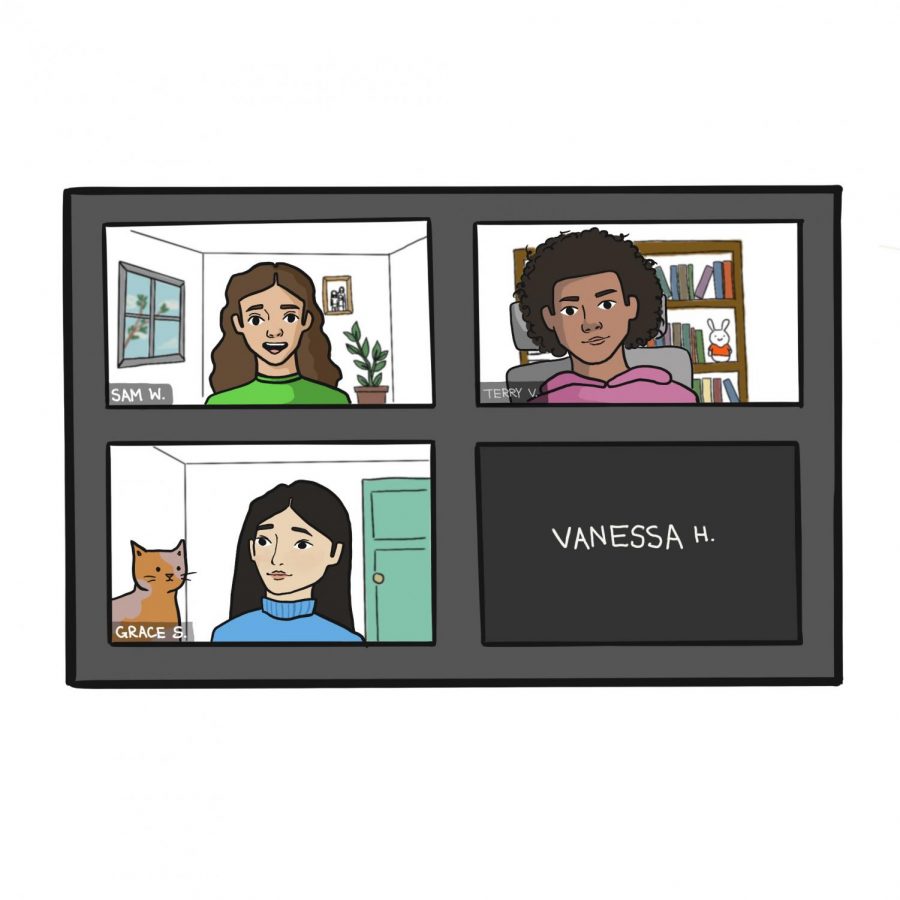The “Camera Off” Button: A Divisive and Uncertain Issue in the Era of Online Education
November 29, 2020
School is no longer face-to-face for the majority of CRLS students. Now in online classes, students and teachers are often left staring at faceless names on their Zoom screens. Online school expects students to learn and interact with teachers and classmates through a camera and a microphone, but cameras are usually off, and microphones are seldomly turned on. While CRLS teachers understand that some students cannot turn their cameras on for personal reasons, some teachers feel that cameras should be mandated.
Having cameras on in class versus having cameras turned off creates a difference in class performance. AP Calculus teacher, Mr. Joseph Nicholson, when asked if his classes performed better with their cameras on, said, “Absolutely. I have two classes in the same subject and the class with videos on has done significantly better on assessments, on average.” Through this experience, he believes “video should be mandated, at least for a majority of class time.”
On the other hand, there are teachers who feel that it is not completely fair to make students turn their cameras on, even though there are numerous benefits. Students do not turn on their camera for various reasons: they may not have space, be in the bathroom, or feel uncomfortable with putting their face on the screen, and as US Government and Politics teacher Ms. Bella Sandvoval put it, “all these reasons are valid.”
Some teachers feel that even if students aren’t participating in class, but their cameras are on, they still get some sort of reassurance that the student is understanding the material. But when a student isn’t engaged and their camera is off, there is no connection between the teacher and student. Angelica Brisk, a media journalism teacher said, “Sometimes when the camera is on and the person is quiet I can at least tell what they are listening to and that teaches me a little bit about them so I can ask them the right questions. When they aren’t engaging and their camera is off there’s no relationship which makes me sad.” She realizes the importance of the camera, but she also does “understand why the district wants it to be optional.” For many teachers like Ms. Brisk, it is a mixed bag.
While it is hard to know exactly what a student is doing behind a blank screen, Ms. Sandoval remarked, “as long as you’re still here and with me in class, and participating and engaging with the rest of the class, we’ll be okay.” There is the risk that students behind their blank screens may not be paying attention at all, but when asked about students getting off task, she responded by saying that “Most students don’t do [it]!”
What troubles her, however, is the student-teacher relationships and class relationships that are lost due to cameras turned off: “Without cameras, we’re missing out on this very essential aspect of developing trust and building a rapport with each other.” With the online situation CRLS is currently in, this is an issue that sadly has almost no alternate solutions.
AP Statistics teacher Ms. Alysa Breyer has a different perspective on the struggle with forming relationships with her students. She feels as if the barrier to not be able to see her students has actually pushed her to prioritize “checking in with them one-on-one through chat, cold-calling during class, email, and office hours.”
No matter the situation, there is no perfect solution. The uncertainty of return pushes this issue to the forefront as teachers and students may never see each other face-to-face this year. Hopefully this will not be the case, but if students do not return to school, this year may only be remembered for blank screens and empty names.











